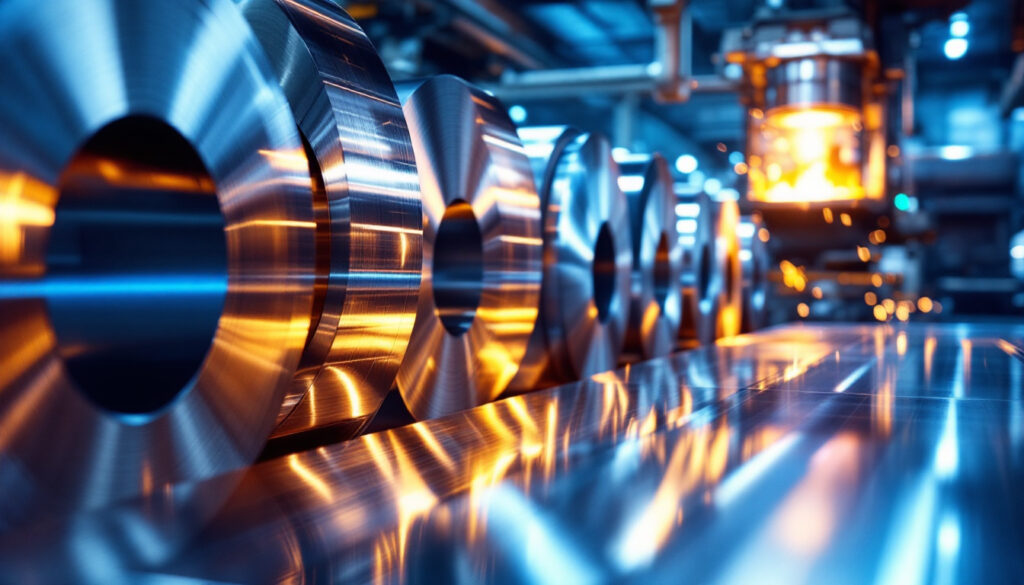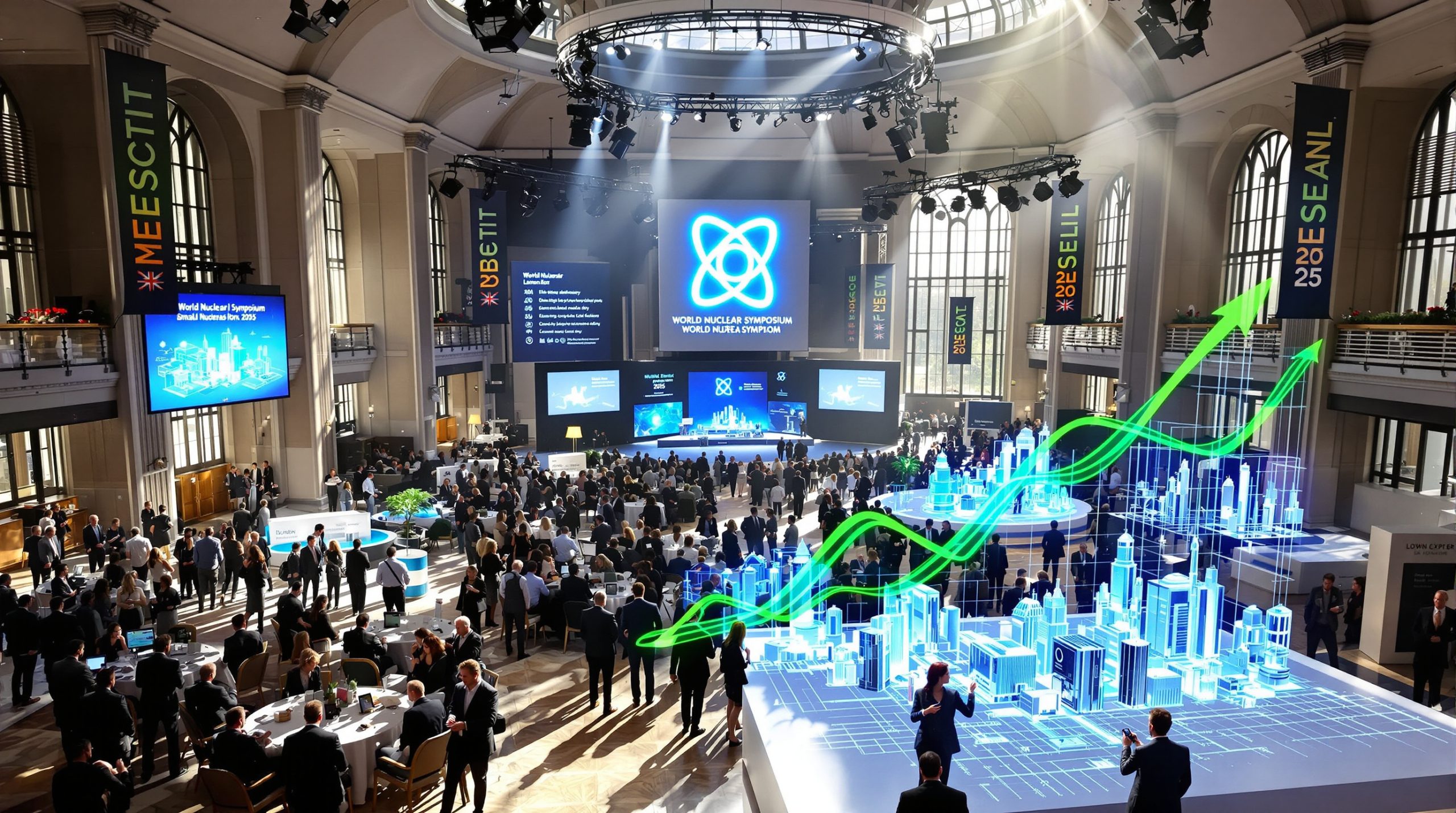How Are Macroeconomic Factors Influencing Stainless Steel Prices?
The stainless steel market has experienced significant price movements recently, driven by a complex interplay of global economic indicators and trade policy developments. The futures market has shown remarkable strength, breaking through key resistance levels and creating a ripple effect throughout the supply chain.
Recent US CPI Data Impact on Metal Markets
Lower-than-expected US Consumer Price Index figures released in May 2025 have significantly bolstered Federal Reserve interest rate cut expectations, creating a favorable environment for commodity markets. This macroeconomic tailwind has proven particularly beneficial for stainless steel and broader non-ferrous metals futures.
The absence of anticipated inflation increases from recent US economy tariffs has further enhanced market sentiment. Investors and traders view this as a positive sign that inflationary pressures remain contained despite shifting trade dynamics.
SMM analysis indicates: "The weaker US CPI data provided strong support for the Federal Reserve to proceed with interest rate cuts as scheduled, driving significant strength across non-ferrous metals futures markets, with stainless steel futures notably breaking through the critical 13,000 yuan/mt threshold."
This macroeconomic foundation has created ideal conditions for price appreciation, as lower interest rate expectations typically weaken the US dollar, making dollar-denominated commodities more attractive to international buyers.
Sino-US Trade Relations and Market Confidence
Recent adjustments to Sino-US tariff policies have substantially reduced export restriction concerns among market participants. The easing of trade tensions between the world's two largest economies has injected fresh optimism into the stainless steel sector.
These positive factors have converged to provide strong momentum for stainless steel trading activity. Market psychology has noticeably shifted toward a "buy on rising prices" mentality, reflecting growing confidence in sustained price appreciation.
The psychological effect has been particularly evident in trading behavior for lower-priced stainless steel products, which have seen significant improvements in transaction volumes. This indicates broadening market participation beyond premium grades, suggesting the rally has depth beyond speculative interest.
What's Happening in the Stainless Steel Futures Market?
The futures market serves as the leading indicator for stainless steel price trends, with recent activity showing exceptional strength and momentum that has begun to influence spot market dynamics.
Current Futures Performance Analysis
The most-traded stainless steel contract SS2507 reached 13,050 yuan/mt as of 10:30 AM on May 14, 2025, representing a substantial 140 yuan/mt increase from the previous session. This breakthrough above the psychologically important 13,000 yuan/mt level has created significant upward pressure on spot market quotations.
Spot premiums and discounts for 304/2B products in the key Wuxi trading hub have been ranging between 270-420 yuan/mt, reflecting the market's adjustment to futures price movements. This premium range indicates strong market sentiment while maintaining some regional pricing flexibility.
In a particularly noteworthy development, some agency traders have suspended trading activities for 304 hot-rolled coil (HRC) products entirely. This unusual move has further intensified market tension and suggests potential supply constraints for this widely used grade.
Market Sentiment and Trading Psychology
The current market environment exhibits classic behavioral finance patterns, with positive price momentum creating a self-reinforcing buying cycle. As prices rise, more participants enter the market, further driving prices upward and validating the initial buying decisions.
Traders are demonstrating textbook "rush to buy during price increases" behavior, a psychological phenomenon where fear of missing out (FOMO) overrides normal price sensitivity. This behavioral pattern typically accelerates market movements in the short term.
Market heat is rapidly escalating as participants across the supply chain seek to secure inventory ahead of anticipated further price increases. This activity has been particularly pronounced for competitively priced material, which is being rapidly absorbed by the market.
A trading psychology expert observes: "The current stainless steel market exhibits classic momentum-driven behavior, where price increases validate earlier buying decisions and encourage additional market entry, creating a self-reinforcing cycle that can persist until fundamental factors or external shocks interrupt the pattern."
What Are the Current Stainless Steel Spot Market Prices?
Understanding current spot market prices provides crucial context for market participants. The following data reflects the latest pricing information from major trading hubs.
Regional Price Comparison: Wuxi vs. Foshan
| Product Type | Wuxi Price (yuan/mt) | Foshan Price (yuan/mt) |
|---|---|---|
| Cold-rolled 201/2B coils | 8,050 | 8,050 |
| Cold-rolled trimmed 304/2B coils | 13,225 | 13,200 |
| Cold-rolled 316L/2B coils | 23,850 | 23,850 |
| Hot-rolled 316L/NO.1 coils | 23,050 | 23,050 |
| Cold-rolled 430/2B coils | 7,500 | 7,500 |
Source: Shanghai Metal Market (SMM), May 14, 2025
These prices represent a significant milestone for the stainless steel futures and spot prices market, with 304/2B exceeding the 13,000 yuan/mt level in both major trading centers, reflecting strong nationwide demand fundamentals.
Price Trends and Regional Variations
The minimal price differences between major trading hubs including Wuxi and Foshan indicates remarkable nationwide market alignment. This convergence suggests that the current price rally is broad-based rather than driven by regional factors or temporary supply disruptions.
Premium stainless steel grades, particularly 316L, are maintaining significantly higher price points due to their enhanced corrosion resistance properties and higher alloy content. The price premium for 316L over standard 304 grade stands at approximately 80%, reflecting its higher nickel and molybdenum content.
Standard 304 grade continues to show strong price momentum amid market optimism, cementing its position as the benchmark for austenitic stainless steel pricing. Its recent performance has been particularly noteworthy given its high production volumes and widespread application.
Ferritic 430 grade remains at lower price points compared to austenitic varieties, primarily due to its nickel-free composition. At 7,500 yuan/mt, 430 grade represents a more economical alternative for applications where the superior corrosion resistance of nickel-containing grades is not required.
What Challenges Could Impact the Stainless Steel Market?
Despite the current price strength, several fundamental factors could pose challenges to sustained price appreciation in the stainless steel market.
Supply-Demand Imbalance Concerns
Current stainless steel futures and spot prices market supply remains at historically high levels throughout the supply chain. This inventory overhang represents a potential headwind for prices if demand fails to keep pace with available material.
The fundamental supply-demand imbalance that has characterized the market in recent quarters has not been substantially resolved despite recent price increases. According to SMM analysis, "The underlying supply-demand dynamics remain challenging despite the current price momentum."
Actual implementation effects and sustainability of recent tariffs impact markets remain uncertain. The market is pricing in optimistic outcomes, but any disappointment in policy execution could reverse sentiment quickly.
Downstream end-use consumption recovery will be a critical variable for price trends moving forward. Without tangible improvement in real-world applications like construction, automotive, and consumer goods, the current price rally may prove difficult to sustain.
Market Insight: "The current stainless steel price rally is built on improved sentiment and speculative positioning rather than fundamental changes in consumption patterns. For sustainable price appreciation, we need to see concrete evidence of improving downstream demand metrics." – SMM Market Analysis, May 2025
Raw Material Cost Pressures
High-grade nickel pig iron (NPI) prices are showing signs of weakness in recent trading sessions. As a key input for stainless steel production, NPI price movements can significantly impact production costs and ultimately market pricing.
High-carbon ferrochrome prices are experiencing downward pressure despite the strength in finished stainless steel products. This divergence suggests that alloy surcharges may face pressure in upcoming price adjustments.
Cost-side support for stainless steel prices has somewhat diminished based on recent raw material price movements. This could potentially squeeze producer margins if finished product prices cannot be maintained at current levels.
Supply chain dynamics require continuous monitoring for market direction indications. The relationship between raw material prices and finished product values provides important insights into market sustainability.
How Are Different Stainless Steel Grades Performing?
The performance of various stainless steel grades has been notably diverse, with significant price differentials based on composition, applications, and market positioning.
Austenitic vs. Ferritic Grade Market Dynamics
Austenitic grades (304, 316L) are commanding significant price premiums over ferritic alternatives due to their superior corrosion resistance and mechanical properties. This price differential reflects both production cost differences and performance characteristics.
316L maintains its premium position due to higher nickel and molybdenum content, with prices approximately 80% above standard 304 grade. This substantial premium reflects both higher raw material content and specialized applications in demanding environments such as chemical processing, marine applications, and pharmaceutical manufacturing.
201 grade, with its lower nickel content, is priced substantially below 304 despite similar applications in many consumer goods. At 8,050 yuan/mt, 201 represents an economical alternative to 304 where maximum corrosion resistance isn't required, positioning at approximately 39% below 304 pricing.
430 grade (ferritic, nickel-free) remains the most economical option at 7,500 yuan/mt, primarily finding applications in automotive exhaust systems, domestic appliances, and interior architectural applications where moderate corrosion resistance is sufficient.
Grade-Specific Market Behavior
304 grade is showing particular market tension with some traders suspending hot-rolled coil trading entirely. This unusual development suggests potential supply constraints or strategic inventory management by major market participants.
316L prices remain stable across regions, indicating consistent demand for high-performance corrosion-resistant applications. The stability in this premium segment suggests that specialized end-users are less price-sensitive and maintain more consistent consumption patterns.
201 grade is maintaining steady pricing despite fluctuations in higher-end products, positioning it as a potentially attractive value option for cost-conscious applications. Its price stability amid market volatility may attract increased interest from manufacturers seeking to optimize material costs.
Market segmentation between premium and economy stainless steel options remains pronounced, with price ratios between grades holding relatively steady despite the overall market rally. This persistent segmentation indicates that different market segments are moving in tandem rather than converging.
What Are the Key Factors to Watch in Stainless Steel Markets?
Understanding the critical indicators and market dynamics will be essential for participants navigating the stainless steel market in coming weeks and months.
Critical Market Indicators
Downstream consumption recovery rates will be decisive for sustained price momentum beyond the current sentiment-driven rally. Particular attention should focus on construction activity, automotive production, and consumer appliance manufacturing trends.
Implementation details of tariff policy adjustments require close monitoring, as the specific mechanisms and enforcement approaches will determine real-world impact on trade flows. Market participants should watch for official announcements and early trade data following implementation.
Raw material price trajectories, particularly for nickel and chromium, will provide important cost-side context for stainless steel pricing. The relationship between input costs and finished product prices offers insights into producer margins and pricing power.
Inventory levels throughout the supply chain serve as a crucial indicator of real demand versus speculative positioning. Monitoring mill, distributor, and end-user inventory changes will provide early signals of sustainable consumption improvements.
Trading Strategy Considerations
Current market psychology favors strategic inventory building during price upswings, though this approach carries increased risk given elevated price levels. Participants must balance the opportunity cost of missing further price appreciation against potential downside risk.
Supply constraints for specific products (like 304 HRC) may create targeted opportunities for well-positioned market participants. Those with existing inventory of constrained products may benefit from widening premiums as availability tightens.
Regional price arbitrage possibilities appear limited given current price alignment between major trading hubs. The narrow spreads between Wuxi and Foshan prices suggest efficient market functioning and limited geographical arbitrage opportunities.
Futures-spot spread dynamics offer potential trading strategies for sophisticated market participants. The current backwardation or contango structure of the forward curve provides insights into market expectations and potential hedging approaches.
Trading Perspective: "In the current environment, market participants must differentiate between sentiment-driven price movements and fundamental value changes. Strategic inventory management should balance opportunity capture against downside protection through careful position sizing and time horizon matching." – Market Analysis, May 2025
FAQ About Stainless Steel Prices and Market Trends
What factors are currently driving stainless steel futures prices?
Stainless steel futures have broken through the 13,000 yuan mark due to a convergence of favorable conditions: lower-than-expected US CPI data strengthening Federal Reserve rate cut expectations, adjustments to Sino-US tariff policies reducing export concerns, and improved market sentiment creating momentum-based buying. The most-traded contract SS2507 reached 13,050 yuan/mt on May 14, 2025, representing a 140 yuan/mt daily increase.
How do stainless steel prices compare between different grades?
Premium austenitic grades command significant price premiums, with cold-rolled 316L/2B priced highest at 23,850 yuan/mt due to its elevated nickel and molybdenum content. Standard 304/2B grade trades around 13,200-13,225 yuan/mt, while economy grades like 201 (8,050 yuan/mt) and 430 (7,500 yuan/mt) remain substantially lower due to reduced or absent nickel content. These price differentials reflect both production costs and performance characteristics.
Are there regional price differences in China's stainless steel market?
Current data shows minimal price differences between major trading hubs like Wuxi and Foshan, with most products showing identical or very similar pricing across regions. The largest differential observed is only 25 yuan/mt for 304/2B coils (13,225 in Wuxi vs. 13,200 in Foshan), representing less than 0.2% variation. This pricing convergence indicates efficient market functioning and nationwide sentiment alignment.
What challenges could limit further price increases?
Despite current optimism, several factors could constrain further price appreciation: historically high supply levels throughout the supply chain, unresolved fundamental supply-demand imbalances, uncertainty regarding tariff policy implementation effects, weakening raw material prices (particularly NPI and ferrochrome), and dependence on tangible downstream consumption recovery rather than merely improved sentiment. Additionally, recent iron ore forecast insights and copper price prediction trends may influence broader metal market sentiment, while gold price highs analysis suggests investors are still seeking safe-haven assets despite the current rally in industrial metals.
Ready to Invest in the Next Major Mineral Discovery?
Stay ahead of the market with Discovery Alert's proprietary Discovery IQ model, which instantly notifies investors about significant ASX mineral discoveries across all major commodities. Visit our dedicated discoveries page to understand why historic mineral discoveries can generate substantial returns, and begin your 30-day free trial today.




